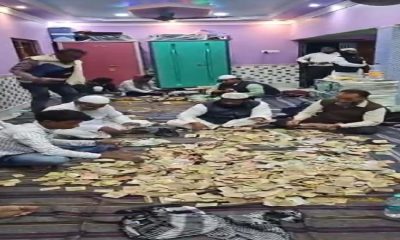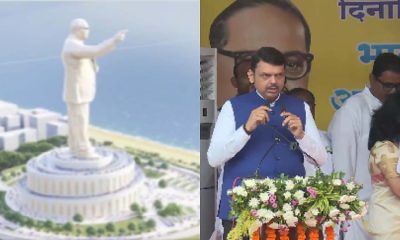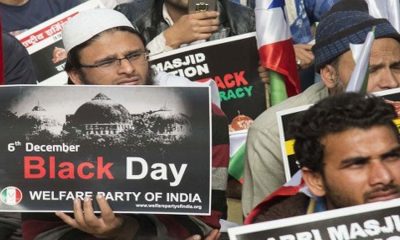General
Chandrayaan-3: Hello Superpowers, India Is On The Moon!
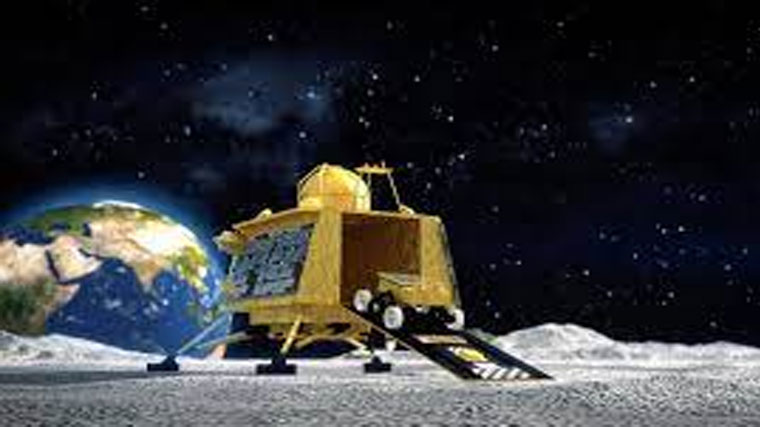
India is on the moon. With those five words, ISRO chairman S Somanath summed up the success of the Chandrayaan-3 mission, a longdrawn journey scripted by its dedicated scientists, unmindful of the recent setback to Chandrayaan-2. As the sun rose over the moon’s South Pole, the Vikram Lander, with Pragyan in its belly, gently touched on the Moon’s surface kicking up lunar dust and kick-starting a new chapter in what could be the beginning of a space odyssey to Mars, the sun and the space beyond. Responding to over a million prayers of Indians all over the world, Vikram held its nerve in what is described as ‘20 minutes of terror’ and landed flawlessly in the unchartered South Pole, making India the first country to leave its footprints in the area and the fourth nation after the US, Russia and China to land on the lunar surface.
It was a nail-biting moment at the ISRO headquarters in Bengaluru when at around 5.25 pm the Automatic Landing Sequence (ALS) was initiated, leaving Vikram to its own maneuvers in the final touchdown. The scientists broke into a huge applause hugging each other, crying in joy as the world cheered India’s achievement in taking within its embrace the ‘khoya khoya chand and the khula aasman.’
PM Modi celebrates the moment
Celebrating the moment, Prime Minister Narendra Modi, who is in Johannesburg in South Africa, said the moon landing is the dawn of a new era. “India will not stop on the moon. The new era of confidence and belief will take us beyond,” he said, adding that the Aditya L1 mission to the Sun and the human space mission, Gaganyaan, are next in the pipeline. Coming back to the Chandrayaan-3, at around 5 pm, the first of the series of the final commands emanated from Bengaluru, telling the ALS to take over and begin its four-phase descent towards the moon’s surface.
Highly controlled and powered descent
In a highly controlled and powered descent, closely monitored by the orbiting propulsion modules – Chandrayaan-2 and 3 — Vikram lander took its final steps, hurtling towards the moon’s surface at a velocity of 1.68 km per second, which is nearly 6048 km per hour – almost ten times the velocity of an airplane. Moments later, in the first phase, the Vikram lander slammed the brakes – called the rough braking phase — by firing its engines for about 11.5 minutes. Next came the fine braking phase when Vikram was made to further slow down and shift to a vertical mode to face the moon’s surface. This was the phase when the lander during the Chandrayaan-2 launch went out of control and crashed on the moon’s surface. At 800 meters above the Moon’s surface, both the horizontal and vertical velocities were reduced to zero giving Vikram 10 seconds to survey the landing strip. The lander was then made to go down further and hover once at 150 meters, taking images of hazards in quest for the best landing site. It then touched down on the lunar surface with just two engines firing and its sturdy legs absorbing the impact of 3m/second or about 10.8 km per hour. Soon after the sensors on the legs felt the lunar surface, the engines immediately shut down marking the end of the 20-minutes of terror. Vikram’s landing was dramatic as it kicked up dust, which took over two hours to settle due to weak gravity on the moon.
Pragyaan rolled out
Once the dust settled down, the child in Vikram’s belly, the Pragyaan, rolled out to ‘play’ on the moon’s surface. The rover took its baby steps towards the Moon’s surface after remaining in deep slumber for over 3.84 lakh km lasting 40 days. The big moment came when Vikram took images of the rover and Pragyaan responded by clicking images of the lander, the first ‘selfies’ clicked by India from the lunar surface. The lander and rover are both solar powered and are made to last one lunar day – which is equal to 14 Earth days. In these 14 days, the Pragyaan would be actively sniffing for water. During the Lunar day, the solar panels would be charged so that when the sun rises again, work can begin again.
NASA and European Space Agency (ESA) played a key role, says ISRO Chief S Somanath
In India’s journey to the moon, NASA and the European Space Agency (ESA) played a key role, said Somanath in his comments. ‘‘We cannot track the mission in the shadow areas and it is here that other agencies would key in,’’ he added. ESA supported the lander during the entire phase of lunar surface operations, helping to ensure that science data acquired by the rover arrives safely with ISRO. ISRO operates a 32-metre deep space tracking station in Byalalu, in Karnataka, that enabled it to locate, track, command and receive telemetry and scientific data from its distant spacecraft. India is not going to stop on the moon. With all the cheers coming from all over and the team work of hundreds of scientists at ISRO, space would be an unchartered expanse waiting to be explored, and the endeavour is to tread where no man has gone before.
Maharashtra
Bhojpuri actor Pawan Singh faces threat, complaint filed in Crime Branch after Lawrence Bishnoi’s threat

Mumbai: Bhojpuri actor Pawan Singh has been threatened by the Lawrence Bishnoi gang not to join Bigg Boss and not to work with Salman Khan, after which Pawan Singh has filed a complaint with the Anti-Money Laundering Squad of the Mumbai Crime Branch here. The police have also started an investigation into Pawan Singh’s case. The Bhojpuri actor received a phone call in which he was threatened with bad consequences including not joining Salman Khan’s Bigg Boss and not working with him. At the same time, the addressee has said that he belongs to the Lawrence Bishnoi gang. The police have started an investigation in this matter and it is being found out who is the threatening caller and whether he really belongs to the Lawrence Bishnoi gang or is he trying to scare the film industry in the name of Lawrence Bishnoi. Earlier, the Lawrence Bishnoi gang also threatened actor Kapil Sharma not to do a film with Salman Khan and not to invite him to host their program, after which the Mumbai police have arrested Kapil Sharma. Security had also been increased. Now again, Lawrence Bishnoi gang has threatened the Bhojpuri actor with dire consequences. Despite the threat, the Bhojpuri actor has decided to participate in Bigg Boss with Salman Khan, after which his security has been increased. The Mumbai Crime Branch is investigating the matter to see if Lawrence Bishnoi himself gave this threat or not. Efforts have also been made to trace the threat along with its recording.
Mumbai Press Exclusive News
On the 33rd anniversary of the Babri Masjid demolition, Mumbai’s streets reverberated with chants of “Allahu Akbar.”Peaceful protests and prayers for recovery were offered, with police on alert.
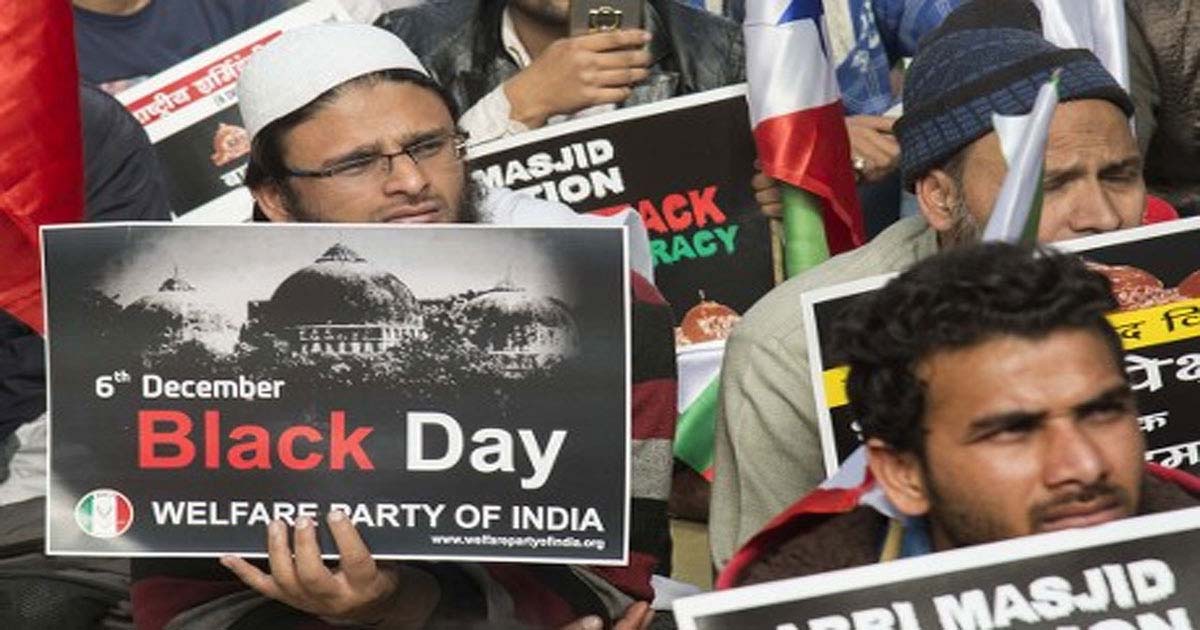
On the 33rd anniversary of the Babri Masjid demolition in Mumbai, mosques, streets, and intersections in the city and suburbs echoed with the call to prayer of Allahu Akbar, Allahu Akbar, when the miscreants had demolished the Babri Masjid at 3:45 pm. Muslims believe that the Babri Masjid is a mosque from the throne to the floor and will remain a mosque until the Day of Judgment. Therefore, Muslims observed a black day of protest on December 6. Prayers were also offered for the recovery of the Babri Masjid on this occasion. Raza Academy had announced to observe a black day on the martyrdom of the Babri Masjid and to give collective azans in mosques. On this occasion, Raza Academy organized azan at the intersections of Muslim-majority areas, especially Minaret Masjid and other mosques. On this occasion, the police had made strict security arrangements. Muslim organizations also observed a black day by giving azan and protesting on the martyrdom of the Babri Masjid. Muslims also remembered the grief of the martyrdom of the Babri Masjid by posting statuses related to the Babri Masjid on social media and every Muslim looked sad.
33rd anniversary of the Babri Masjid demolition; Azans were given in the city on the appeal of Raza Academy. On the occasion of the 33rd anniversary of the Babri Masjid demolition, Raza Academy gave azan in different areas of the city at 3:45 pm. The aim of this initiative is to keep the memory of this historical event fresh and pay tribute to the martyrs of Babri Masjid. Raza Academy gave azan in particular at Khatri Masjid, Bunyan Road, Minare Masjid, Muhammad Ali Road Corner, Bhandi Bazaar, Neer Mandvi Post Office. On this occasion, scholars prayed for the recovery of Babri Masjid and made it clear that Babri Masjid was taken by fraud. Babri Masjid will remain a mosque until the Day of Judgment. The miscreants have tarnished the constitution of the country by demolishing this mosque, which will always remain a fresh wound like injustice. Raza Academy head Saeed Noori said that Black Day is observed on the martyrdom of Babri Masjid. On this day, Raza Academy organizes Azan and peaceful protests are held against this injustice. He said that miscreants targeted the mosque and martyred it while it was protected, but even today its perpetrators are free. The Supreme Court has also accepted that Babri Masjid was not built by demolishing a temple, while miscreants have put a stigma of oppression and injustice on the chest of the country. Every year on the anniversary of Babri Masjid, Raza Academy refreshes its memory by giving Azan. There is a sorrow that will always remain. Mumbai Police had made strict security arrangements on the anniversary of Babri Masjid and an alert was issued in the city.
Maharashtra
Mumbai Additional Municipal Commissioner Amit Saini has been transferred and replaced by IAS officer Avinash Dhakne following allegations of a “cash-for-transfer” scam.
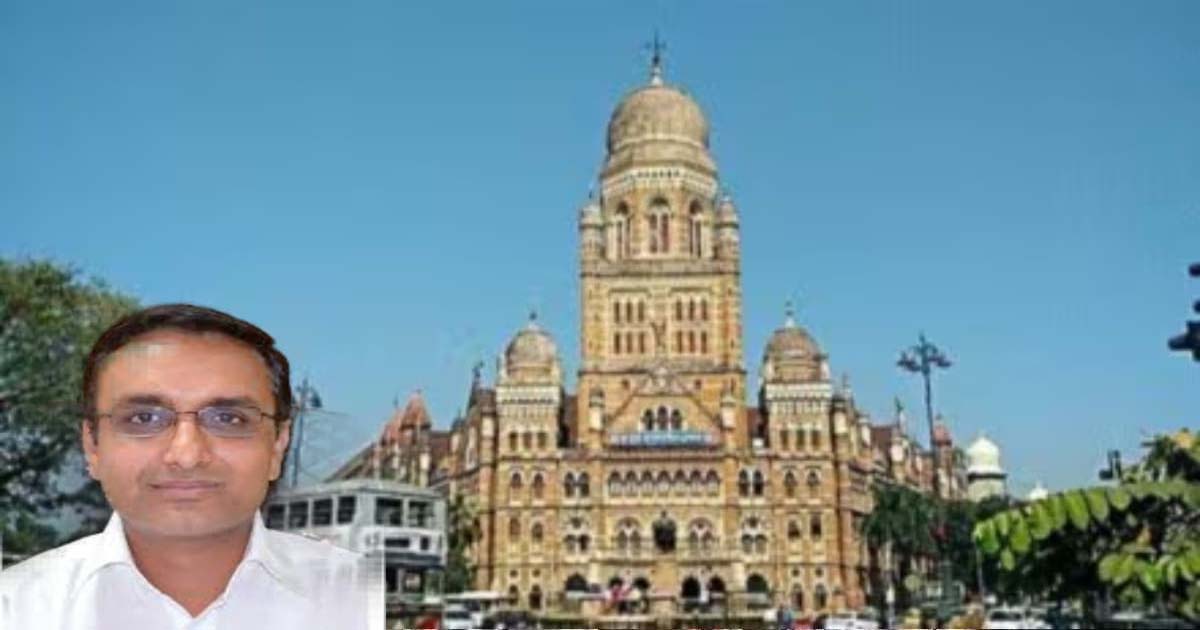
The transfer comes after an exposé revealed alleged corruption involving the reshuffling of over 160 engineers in the Brihanmumbai Municipal Corporation (BMC), which was subsequently stayed by the government.
A complaint was filed by activist Sanjay Satam to Municipal Commissioner Bhushan Gagrani, alleging that Saini was charging between ₹5 lakh and ₹40 lakh to transfer engineers.
Saini, a 2007-batch IAS officer, had been posted in the BMC since March 2024.
Avinash Dhakne, a 2017-batch IAS officer, previously served as the member secretary of the Maharashtra Pollution Control Board (MPCB) and has taken charge.
The transfers followed demands from activists for action, with Galgali thanking Chief Minister Devendra Fadnavis for the decision.
Activist Satam stated that the transfer is insufficient and called for a departmental and Anti-Corruption Bureau (ACB) investigation into the matter.
-

 Crime3 years ago
Crime3 years agoClass 10 student jumps to death in Jaipur
-

 Maharashtra1 year ago
Maharashtra1 year agoMumbai Local Train Update: Central Railway’s New Timetable Comes Into Effect; Check Full List Of Revised Timings & Stations
-

 Maharashtra1 year ago
Maharashtra1 year agoMumbai To Go Toll-Free Tonight! Maharashtra Govt Announces Complete Toll Waiver For Light Motor Vehicles At All 5 Entry Points Of City
-

 Maharashtra1 year ago
Maharashtra1 year agoFalse photo of Imtiaz Jaleel’s rally, exposing the fooling conspiracy
-

 National News1 year ago
National News1 year agoMinistry of Railways rolls out Special Drive 4.0 with focus on digitisation, cleanliness, inclusiveness and grievance redressal
-

 Maharashtra1 year ago
Maharashtra1 year agoMaharashtra Elections 2024: Mumbai Metro & BEST Services Extended Till Midnight On Voting Day
-

 National News1 year ago
National News1 year agoJ&K: 4 Jawans Killed, 28 Injured After Bus Carrying BSF Personnel For Poll Duty Falls Into Gorge In Budgam; Terrifying Visuals Surface
-

 Crime1 year ago
Crime1 year agoBaba Siddique Murder: Mumbai Police Unable To Get Lawrence Bishnoi Custody Due To Home Ministry Order, Says Report



